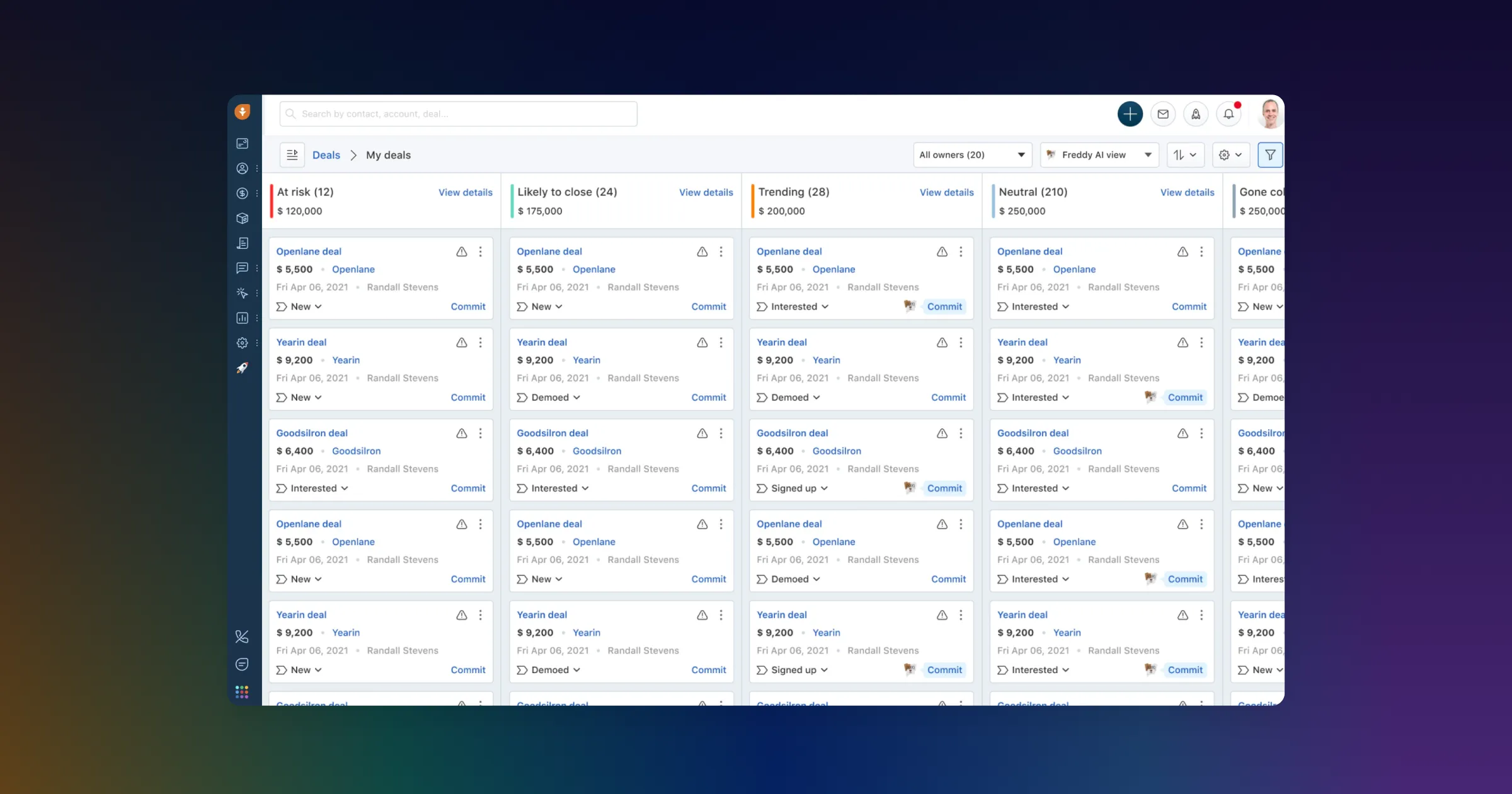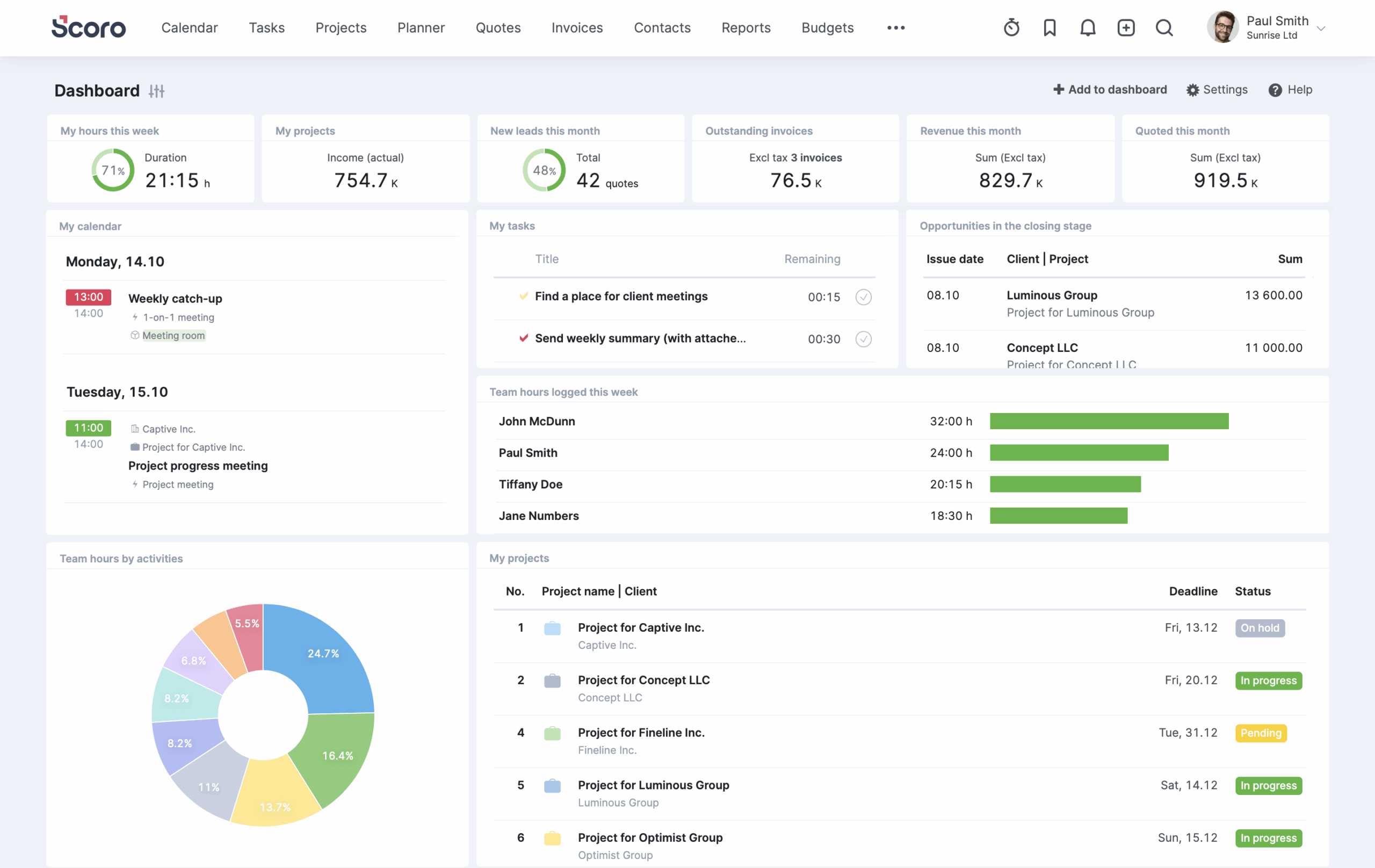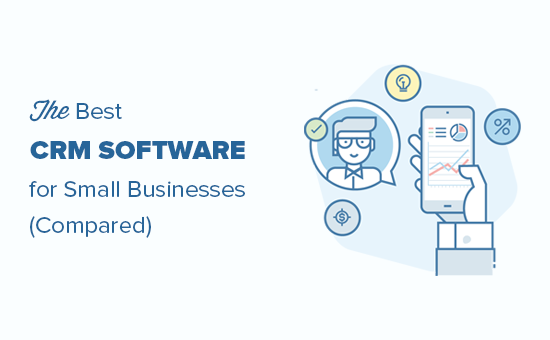Introduction: The Power of Data in Marketing
In today’s hyper-competitive business landscape, making informed decisions is no longer a luxury; it’s a necessity. And at the heart of informed decision-making lies data. Specifically, the data generated by your customers. This is where CRM marketing analytics comes into play. It’s more than just crunching numbers; it’s about understanding your customers, predicting their behavior, and ultimately, driving sustainable growth. This comprehensive guide will delve into the world of CRM marketing analytics, providing you with the knowledge and tools to harness its power.
Imagine having a crystal ball that reveals the preferences, behaviors, and future actions of your customers. CRM marketing analytics offers a glimpse into that reality. By analyzing customer data stored within your CRM system, you can gain invaluable insights into their journey, identify pain points, and optimize your marketing strategies for maximum impact. It’s about moving beyond guesswork and relying on data-driven insights to fuel your marketing efforts.
What is CRM Marketing Analytics? Breaking Down the Basics
CRM marketing analytics is the process of using data from your Customer Relationship Management (CRM) system to analyze and understand your customers and marketing efforts. It involves collecting, cleaning, analyzing, and interpreting customer data to gain actionable insights. Think of your CRM as a treasure trove of information, and CRM marketing analytics as the map that helps you find the hidden gems within that treasure.
At its core, CRM marketing analytics focuses on these key areas:
- Customer Segmentation: Grouping customers based on shared characteristics (e.g., demographics, behavior, purchase history).
- Campaign Performance Analysis: Evaluating the success of marketing campaigns (e.g., email opens, click-through rates, conversion rates).
- Customer Lifetime Value (CLTV) Analysis: Predicting the total revenue a customer will generate over their relationship with your business.
- Churn Rate Analysis: Identifying and understanding why customers are leaving your business.
- Sales Performance Analysis: Tracking and analyzing sales activities and results.
By focusing on these core areas, businesses can develop a deep understanding of their customers, refine their marketing strategies, and improve their overall performance. It’s a continuous cycle of analysis, action, and optimization.
The Benefits of Implementing CRM Marketing Analytics
The advantages of incorporating CRM marketing analytics into your business strategy are numerous and far-reaching. Here are some of the most significant benefits:
- Improved Customer Understanding: Gain a 360-degree view of your customers, including their preferences, needs, and behaviors. This enables you to create more personalized and targeted marketing campaigns.
- Enhanced Marketing ROI: Optimize your marketing spend by focusing on the most effective channels and campaigns. This leads to higher conversion rates and a better return on investment (ROI).
- Increased Sales and Revenue: Identify and nurture leads more effectively, close deals faster, and increase overall sales.
- Improved Customer Retention: Understand why customers are churning and take proactive steps to retain them. This is often more cost-effective than acquiring new customers.
- Data-Driven Decision Making: Move away from guesswork and make informed decisions based on data and insights. This leads to more effective strategies and improved business outcomes.
- Personalized Customer Experiences: Tailor your interactions with customers to their individual needs and preferences, creating a more positive and engaging experience.
- Enhanced Sales Team Performance: Equip your sales team with the information they need to close deals more effectively, such as customer purchase history and preferences.
These benefits collectively contribute to a more customer-centric and efficient business, leading to greater success in the long run. It’s an investment that pays off in multiple ways.
Key Metrics and KPIs in CRM Marketing Analytics
To effectively measure and improve your marketing performance, it’s crucial to track the right metrics and Key Performance Indicators (KPIs). Here are some of the most important ones:
- Customer Acquisition Cost (CAC): The cost of acquiring a new customer. This helps you understand the efficiency of your marketing and sales efforts.
- Customer Lifetime Value (CLTV): The predicted revenue a customer will generate over their relationship with your business. This helps you prioritize customers and make informed marketing decisions.
- Conversion Rate: The percentage of leads that convert into customers. This measures the effectiveness of your sales and marketing funnels.
- Churn Rate: The percentage of customers who stop doing business with you over a given period. This helps you identify and address customer attrition.
- Return on Investment (ROI): The profitability of your marketing campaigns. This helps you measure the effectiveness of your marketing spend.
- Website Traffic: The number of visitors to your website. This helps you measure the effectiveness of your online marketing efforts.
- Lead Generation: The number of leads generated through your marketing efforts.
- Email Open Rate and Click-Through Rate: Measures the engagement with your email campaigns.
- Social Media Engagement: Measures the interaction with your social media content (likes, shares, comments).
These metrics provide a comprehensive view of your marketing performance and help you identify areas for improvement. The specific KPIs that are most relevant will depend on your specific business goals and objectives. You should regularly review and analyze these metrics to track your progress and make necessary adjustments.
How to Implement CRM Marketing Analytics: A Step-by-Step Guide
Implementing CRM marketing analytics might seem daunting, but following a structured approach can make the process manageable and effective. Here’s a step-by-step guide:
- Define Your Goals and Objectives: Before you start, clearly define what you want to achieve with CRM marketing analytics. What questions do you want to answer? What problems do you want to solve?
- Choose the Right CRM System: Select a CRM system that meets your business needs and provides robust analytics capabilities. Consider features such as data import/export, reporting, and integration with other marketing tools.
- Clean and Organize Your Data: Ensure your CRM data is accurate, complete, and consistent. Cleanse your data by removing duplicates, correcting errors, and standardizing formats.
- Segment Your Customers: Group your customers based on shared characteristics to create targeted marketing campaigns.
- Set Up Tracking and Reporting: Implement tracking mechanisms to collect data on your marketing activities and set up reports to monitor your key metrics.
- Analyze Your Data: Use your CRM analytics tools to analyze your data and identify trends, patterns, and insights.
- Develop Actionable Insights: Transform your data analysis into actionable insights that will inform your marketing strategies.
- Implement Your Strategies: Put your insights into action by implementing new marketing campaigns, optimizing existing ones, and making other necessary adjustments.
- Monitor and Evaluate: Continuously monitor your key metrics and evaluate the effectiveness of your strategies. Make adjustments as needed.
- Automate and Integrate: Automate as much of the process as possible and integrate your CRM with other marketing tools to streamline your workflows.
This process is iterative, meaning that you will continuously refine your strategies based on the data you collect and analyze. Consistency and ongoing improvement are key to successful implementation.
Tools and Technologies for CRM Marketing Analytics
A variety of tools and technologies can help you implement and leverage CRM marketing analytics effectively. Here are some of the most popular options:
- CRM Systems:
- Salesforce: A leading CRM platform with powerful analytics capabilities.
- HubSpot: An all-in-one marketing and sales platform with robust analytics tools.
- Zoho CRM: A comprehensive CRM system with a focus on affordability.
- Microsoft Dynamics 365: A versatile CRM platform that integrates with other Microsoft products.
- Data Visualization Tools:
- Tableau: A powerful data visualization tool that allows you to create interactive dashboards and reports.
- Power BI: A business intelligence platform from Microsoft that offers data visualization and analytics capabilities.
- Google Data Studio: A free data visualization tool that integrates with Google Analytics and other data sources.
- Marketing Automation Platforms:
- Marketo: A marketing automation platform with advanced analytics features.
- Pardot: A marketing automation platform from Salesforce.
- ActiveCampaign: An email marketing and marketing automation platform.
- Analytics Integrations: Ensure your CRM system can integrate with your website analytics (e.g., Google Analytics) and other marketing tools.
The best tools for your business will depend on your specific needs, budget, and technical expertise. It’s often beneficial to start with a CRM system that offers basic analytics capabilities and then expand your toolkit as your needs evolve.
Data Privacy and Ethical Considerations
As you collect and analyze customer data, it’s essential to be mindful of data privacy and ethical considerations. Here are some key points to keep in mind:
- Compliance with Data Privacy Regulations: Adhere to relevant data privacy regulations, such as GDPR (General Data Protection Regulation) and CCPA (California Consumer Privacy Act). This includes obtaining consent for data collection, providing transparency about data usage, and allowing customers to access, modify, and delete their data.
- Data Security: Implement robust security measures to protect customer data from unauthorized access, use, or disclosure. This includes using encryption, access controls, and regular security audits.
- Transparency and Consent: Be transparent with your customers about how you collect and use their data. Obtain their explicit consent before collecting and using their data for marketing purposes.
- Avoid Bias and Discrimination: Ensure your analytics do not perpetuate bias or discrimination. Regularly review your data and models to identify and mitigate any potential biases.
- Respect Customer Preferences: Allow customers to opt-out of marketing communications and respect their preferences.
- Data Minimization: Only collect and use the data that is necessary for your intended purpose.
- Anonymization and Pseudonymization: Consider anonymizing or pseudonymizing customer data where possible to protect their privacy.
By prioritizing data privacy and ethics, you can build trust with your customers and maintain a positive brand reputation. This is not just about legal compliance; it’s about doing what’s right and building long-term relationships with your customers.
Real-World Examples: CRM Marketing Analytics in Action
Let’s explore some real-world examples of how businesses are using CRM marketing analytics to achieve remarkable results:
- Example 1: E-commerce Retailer
An e-commerce retailer uses CRM marketing analytics to segment its customers based on their purchase history, browsing behavior, and demographics. They then use this segmentation to personalize email marketing campaigns, offering targeted product recommendations and promotions. As a result, they see a significant increase in click-through rates, conversion rates, and overall revenue.
- Example 2: SaaS Company
A SaaS company uses CRM marketing analytics to track customer churn. They identify that customers who haven’t logged into the platform in a certain amount of time are at high risk of churning. Based on this insight, they create automated email campaigns to re-engage these customers, offering helpful tips, new features, and special offers. This proactive approach significantly reduces their churn rate and improves customer retention.
- Example 3: Financial Services Provider
A financial services provider uses CRM marketing analytics to identify high-value customers and tailor their customer service experiences. They analyze customer data to understand their needs and preferences, enabling them to offer personalized financial advice and services. This leads to increased customer satisfaction, loyalty, and cross-selling opportunities.
These examples demonstrate the versatility and power of CRM marketing analytics across various industries. The specific applications will vary depending on the business and its objectives, but the underlying principle remains the same: leveraging data to gain a deeper understanding of your customers and optimize your marketing efforts.
Challenges and How to Overcome Them
While CRM marketing analytics offers tremendous potential, it’s not without its challenges. Here are some common obstacles and how to overcome them:
- Data Quality Issues: Inaccurate, incomplete, or inconsistent data can undermine your analysis. To overcome this, invest in data cleansing and validation processes. Regularly review and update your data, and implement data quality checks.
- Lack of Integration: If your CRM system is not integrated with other marketing tools, you may have fragmented data and limited insights. Integrate your CRM with your website analytics, email marketing platform, and other relevant tools.
- Skills Gap: A lack of skilled professionals who can analyze data and derive actionable insights can be a barrier. Consider training existing staff, hiring data analysts, or outsourcing your analytics needs.
- Resistance to Change: Some team members may be resistant to adopting data-driven decision-making. Educate your team on the benefits of CRM marketing analytics and involve them in the process. Demonstrate the value of data-driven insights through concrete examples.
- Difficulty in Measuring ROI: It can be challenging to directly attribute marketing efforts to specific results. Implement clear tracking mechanisms, use attribution models, and regularly measure your key metrics.
- Data Overload: It can be overwhelming to analyze vast amounts of data. Focus on the most relevant metrics and insights. Use data visualization tools to simplify your analysis.
By proactively addressing these challenges, you can maximize the effectiveness of your CRM marketing analytics efforts. It’s an ongoing process that requires adaptability and a commitment to continuous improvement.
Future Trends in CRM Marketing Analytics
The field of CRM marketing analytics is constantly evolving, with new technologies and trends emerging regularly. Here are some key trends to watch:
- Artificial Intelligence (AI) and Machine Learning (ML): AI and ML are being used to automate data analysis, predict customer behavior, and personalize marketing campaigns.
- Predictive Analytics: Using historical data to predict future trends and customer behavior.
- Hyper-Personalization: Creating highly personalized customer experiences based on individual preferences and behaviors.
- Real-Time Analytics: Analyzing data in real-time to make immediate adjustments to marketing campaigns.
- Customer Data Platforms (CDPs): Centralizing customer data from various sources to create a unified view of the customer.
- Emphasis on Privacy and Ethical Data Practices: Increased focus on data privacy and ethical considerations.
- Integration of Voice and Conversational AI: Utilizing voice assistants and chatbots to enhance customer interactions and gather data.
Staying abreast of these trends will be crucial for businesses that want to remain competitive and leverage the full potential of CRM marketing analytics. The future is about being proactive, adaptable, and using data in innovative ways.
Conclusion: The Path to Data-Driven Marketing Success
CRM marketing analytics is no longer a nice-to-have; it’s a must-have for businesses that want to thrive in today’s dynamic market. By leveraging the power of data, you can gain a deep understanding of your customers, optimize your marketing efforts, and drive sustainable growth. The journey may involve challenges, but the rewards are substantial.
Remember, the key to success lies in:
- Defining your goals and objectives.
- Choosing the right tools and technologies.
- Prioritizing data quality and security.
- Embracing a data-driven culture.
- Continuously monitoring and optimizing your strategies.
By following these principles, you can unlock the full potential of CRM marketing analytics and achieve lasting success. Embrace the power of data, and watch your business flourish. It’s time to transform your marketing from guesswork to a science, and to truly understand and connect with your customers in a meaningful way. The future of marketing is here, and it’s powered by data.



